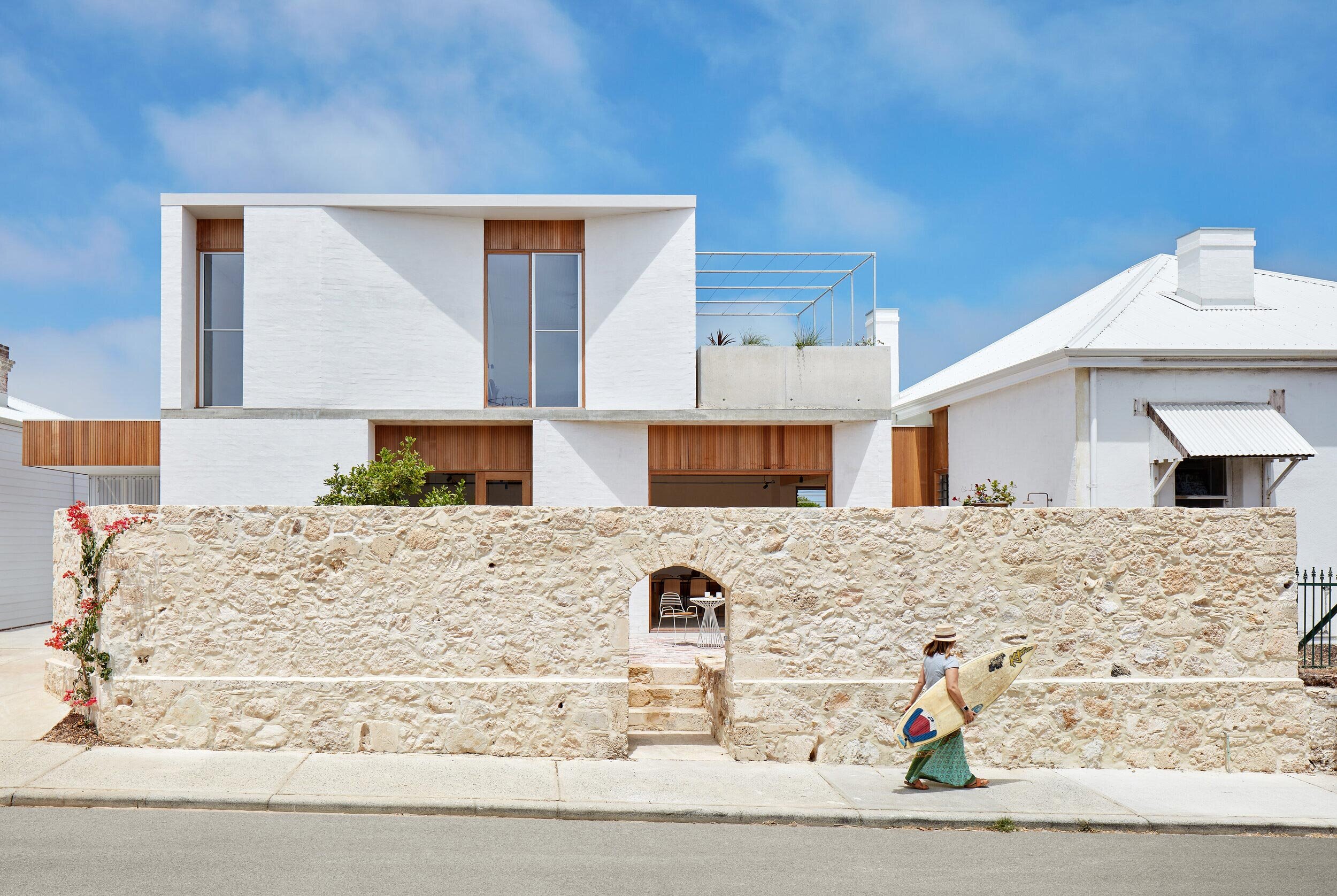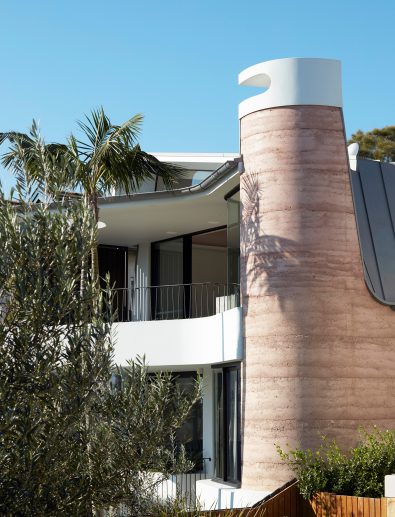Work with a Professional Residential House Architect for Customized Home Design
Work with a Professional Residential House Architect for Customized Home Design
Blog Article
Top Fads in Residential Design You Must Learn About
As household architecture remains to develop, a number of engaging trends are forming the method we develop and occupy our living areas. Secret growths such as sustainable building methods, the assimilation of clever home modern technology, and the rise of modular homes highlight a significant change towards both performance and ecological responsibility. Furthermore, principles like open plan living and biophilic style are redefining our communication with room and nature. Understanding these patterns not just informs design options yet also reveals more comprehensive ramifications for way of life and neighborhood - residential house architect. What might these technologies indicate for the future of residential living?
Lasting Structure Practices
An increasing variety of household tasks are welcoming lasting structure practices, driven by a growing awareness of environmental impact and energy efficiency. This change is identified by the assimilation of eco-friendly materials, energy-efficient layouts, and innovative construction methods. Homeowners and contractors are significantly focusing on using renewable energies, such as bamboo and recycled metals, which not only lower the carbon impact yet also boost the durability and visual charm of residential properties.
Integrating energy-efficient systems is another critical facet of sustainable structure - residential house architect. Functions such as high-performance insulation, energy-efficient windows, and photovoltaic panels are ending up being standard in brand-new residential layouts. These aspects not just add to lower power consumption yet also give considerable long-term cost savings for homeowners
In addition, the design of lasting homes typically emphasizes natural light and air flow, decreasing the dependence on synthetic lights and climate control systems. Landscape design techniques, such as xeriscaping, additional advertise sustainability by reducing water use.
As the need for sustainable living remedies remains to increase, the residential design field is poised to adapt and introduce, making certain that future homes are not only eco responsible but practical and also comfortable for their passengers. - residential house architect
Smart Home Technology
Smart home innovation is changing the way house owners interact with their home, boosting convenience, power, and protection administration. This innovative method integrates various gadgets and systems, allowing users to manage their homes from another location or via automated procedures. Central to this fad is making use of clever tools such as thermostats, lights, protection electronic cameras, and appliances, all attached using the Net of Points (IoT)
Among one of the most attractive features of smart home technology is the ability to tailor setups for ideal energy efficiency. Property owners can monitor power use and change heating, cooling, and lights based upon their routines, considerably lowering utility costs. Innovative safety systems equipped with clever locks and surveillance electronic cameras supply tranquility of mind, allowing remote monitoring and informs to potential safety breaches.
Combination with voice-activated aides improves customer experience, allowing house owners to control gadgets with simple voice commands. As innovation remains to develop, the possibility for smart home systems to enhance lifestyle expands, making them a crucial consideration in contemporary household architecture. Eventually, clever home technology is not simply a fad but an essential change towards more intelligent living atmospheres.
Open Principle Living
Open concept living has become a specifying feature in contemporary property style, characterized by the removal of conventional obstacles in between rooms. This layout philosophy promotes fluidity and connectivity within the home, enabling a seamless transition in between locations such as the kitchen, dining, and living spaces. By getting rid of partitions and walls, open concept layouts create a feeling of spaciousness, promoting a welcoming ambience that boosts social communication.

Moreover, this method to property layout lines up with minimalism, concentrating on useful simpleness and click site aesthetic coherence. Property owners value the adaptability of these layouts, which can be quickly adapted to show individual style through furnishings setup and design. As open principle living continues to obtain traction, it stays a testimony to developing family members dynamics and the wish for homes that boost connection and comfort.
Biophilic Layout
Biophilic design has come to be increasingly considerable in household architecture, highlighting the inherent link between people and nature. This layout ideology seeks to integrate natural environments right into living spaces, consequently cultivating a sense of well-being and improving the lifestyle for occupants. By incorporating functions such as all-natural light, plant life, and organic materials, biophilic design promotes a harmonious connection in between interior settings and the environment.
Key aspects of biophilic style consist of big home windows that give unhampered sights of exterior landscapes, living wall surfaces that present greenery into interiors, and open floor plans that encourage airflow and natural light penetration. Water features, both inside and outside the home, offer to develop comforting ambiences and boost sensory experiences.
Furthermore, making use of sustainable materials not only sustains environmental stewardship however additionally adds to much healthier indoor air quality. As recognition of environmental concerns increases, property owners are increasingly prioritizing designs that reflect their connection to nature. Fundamentally, biophilic layout home not just raises aesthetic appeal yet additionally addresses emotional and emotional demands, making it a crucial pattern in contemporary household style.
Modular and Prefab Houses

Moreover, modular and prefab homes are developed with sustainability in mind. Numerous makers use green products and energy-efficient systems, such as photovoltaic panels and progressed insulation methods, adding to minimized energy consumption and lower utility costs for home owners. The adaptability of layout choices enables for modification, dealing with diverse functional requirements and aesthetic choices.
As the need for cost effective real estate remains to rise, prefab and modular homes offer a feasible service, addressing both financial and ecological difficulties. Communities are significantly acknowledging the potential of these frameworks, integrating them into city and rural settings. Overall, the pattern toward prefab and modular homes symbolizes a shift towards much more lasting, efficient, and versatile living atmospheres, making them a pivotal facet of contemporary household design.
Verdict
In final thought, the evolving landscape of household design showcases substantial patterns that focus on sustainability, innovation, and health. Lasting building methods and clever home technologies improve efficiency and benefit, while open principle living and biophilic design foster social interaction and a link to nature. The rise of modular and prefab homes uses personalized and inexpensive services, showing a more comprehensive change towards functional and responsible living. These patterns jointly emphasize a dedication to developing innovative and harmonious domestic atmospheres.
Trick growths such as sustainable building techniques, the combination of wise home technology, and the rise of modular homes underscore a significant change towards both performance and environmental duty.The rise of modular and prefab homes has transformed the household design landscape, supplying ingenious options for reliable and sustainable living.Furthermore, prefab and modular homes are developed with sustainability in mind. In general, the trend toward modular and prefab homes symbolizes a shift towards extra sustainable, effective, and adaptable living environments, making them an essential aspect of contemporary residential design.
Sustainable structure techniques and clever home modern technologies improve performance and ease, while his response open concept living and biophilic style foster social interaction and a connection to nature.
Report this page